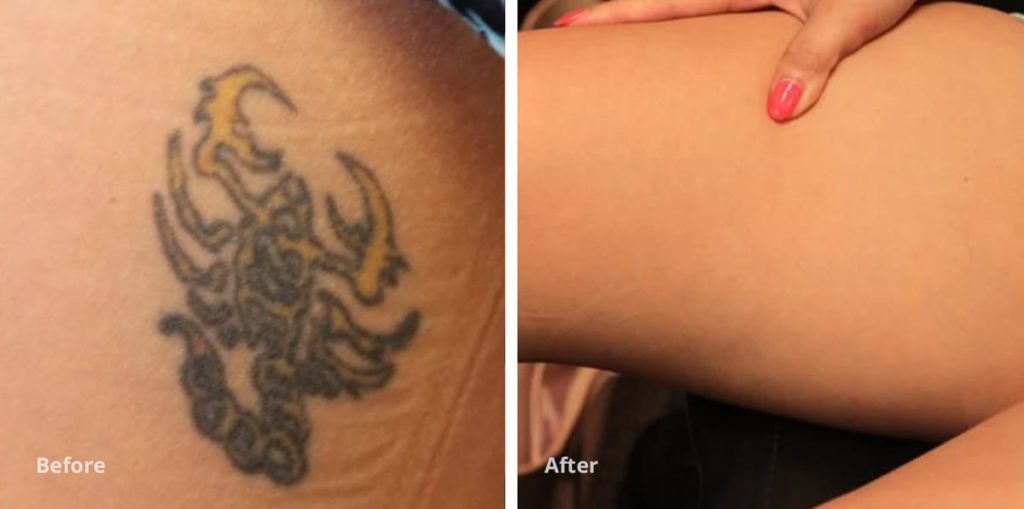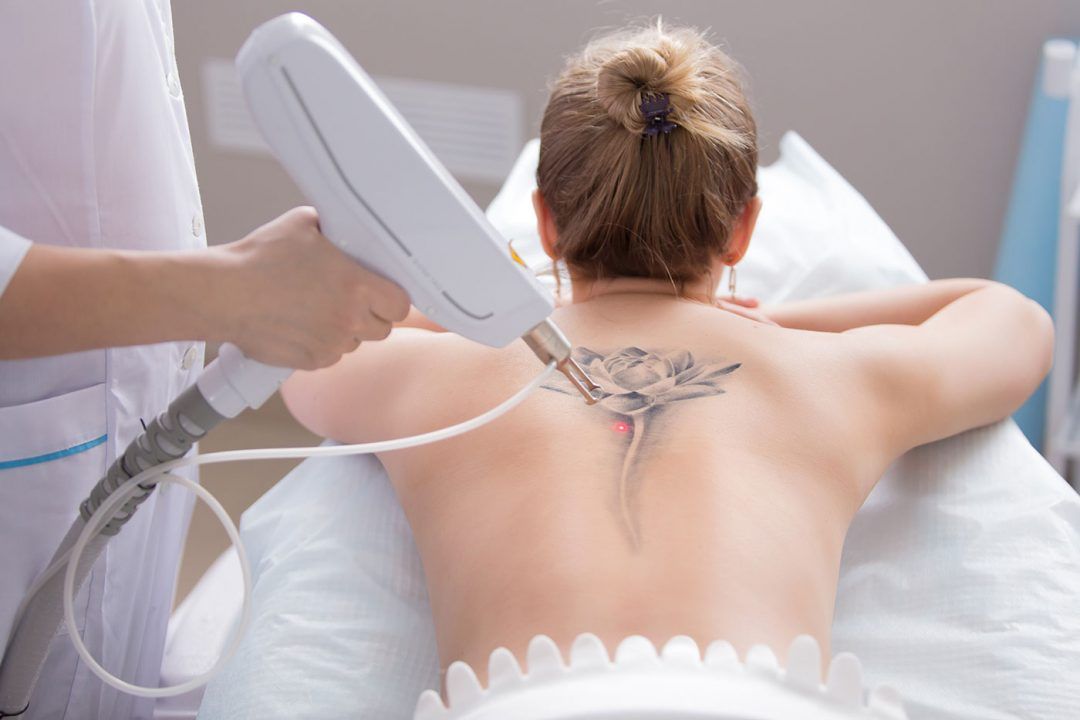The History of Tattooing
Before discussing about laser tattoo removal it is important to know the history of tattooing. Tattoos have been a part of mankind’s culture and civilizations for thousands of years with an array of patterns and symbolic values. From the early Egyptian, Greek, and Roman civilizations to the modern society we have today, tattooing has remained popular. With time, more tattoos are being acquired to quench one’s thirst for expressing individual identity.
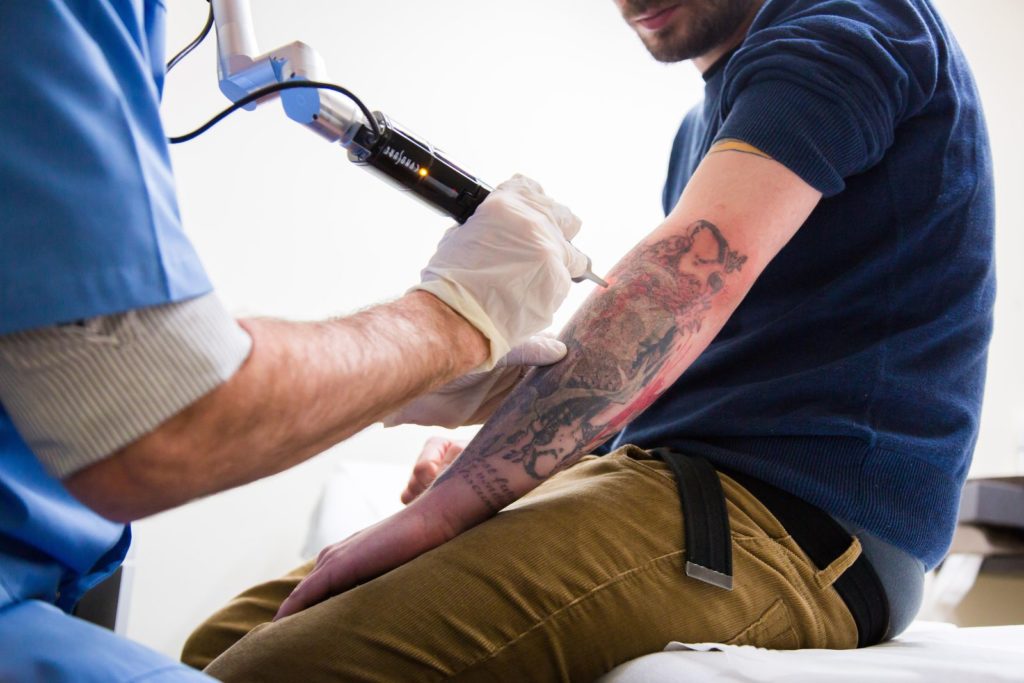
As well the number of people who are seeking their removal is also growing. The main reasons for tattoo removal include new jobs, the need to express a certain image at work or in new social gatherings, and new, annulling opinions towards old tattoos. Sadly, the removal of tattoos is usually more expensive and time-consuming than obtaining them.
Classification of Tattoos
Tattoos can broadly be classified into professional, hobbyist, beautifying, traumatic, or medical tattoos. Professional tattoos are employed with a tattoo machine into the lower layer of the dermis and are accredited to be permanent in nature. They commonly require repeated procedures to remove.


Amateur or hobbyist tattoos are normally smaller, lighter in color, and applied more easily using handheld needles or homemade machines, and it is easier to remove them. Beautifying tattoos are often referred to as permanent makeup and are more common. Permanent eyeliners, eyebrows, and lip liners are generally applied using the process of micro-pigmentation to save time and intensify facial features.
However, the inks used often include pigments that are red, brown, white, or flesh-colored; inks comprising titanium dioxide and iron oxide are tricky to remove. Traumatic tattoos are installed in the skin following injuries. Such pressurized insertion of dark bits into the deep dermis gives rise to black or blue tattoos, depending on the intensity of the pigment.
The Evolution of Tattoo Removal
Historically, the elimination of unwanted tattoos included harmful techniques such as dermabrasion, salabrasion, chemical destruction, cryosurgery, electrosurgery, and surgical extraction. Such non-selective harmful modalities usually resulted in an incomplete elimination and fluctuating levels of scarring and dis pigmentation.
Advancements in laser and light-based technology have transformed tattoo removal, using various wavelengths to target different-colored pigments with relative smoothness and fewer complexities than before.
Quality-switched (QS) lasers have long been the established workhorse for the elimination of tattoos. The laser tattoo removal procedure is based on the notion of selective photo thermolysis, where laser light of various wavelengths is preferentially assimilated by different chromophores.
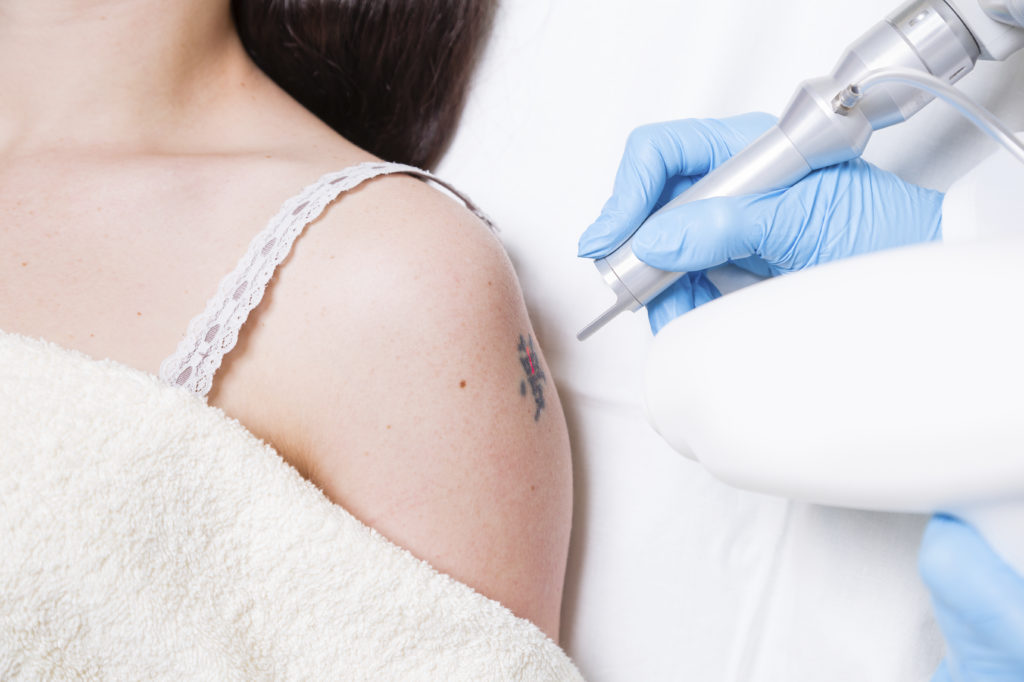

Some Important Pre-Treatment Measures
A meticulous history and analysis are crucial in ascertaining the type of tattoo and the skin type of the patient before treatment. Regulated digital photography helps record the baseline appearance and any following development. The patient’s treatment aspiration and expectation should be directed, and treatment choices, anticipated upshot, latent risks, downtime, and postoperative care should be reviewed.
There should be a fair opportunity for patients to have all their questions answered. Gaining informed assent with a clear outline of perils and advantages before tattoo removal is imperative, and shields both the clinician and patient.
Ascertaining pragmatic patient expectations through good rapport helps achieve a satisfactory outcome. Compound laser procedures are usually required to remove a tattoo via selective photo thermolysis, with an average number of 5-15 treatment sessions.
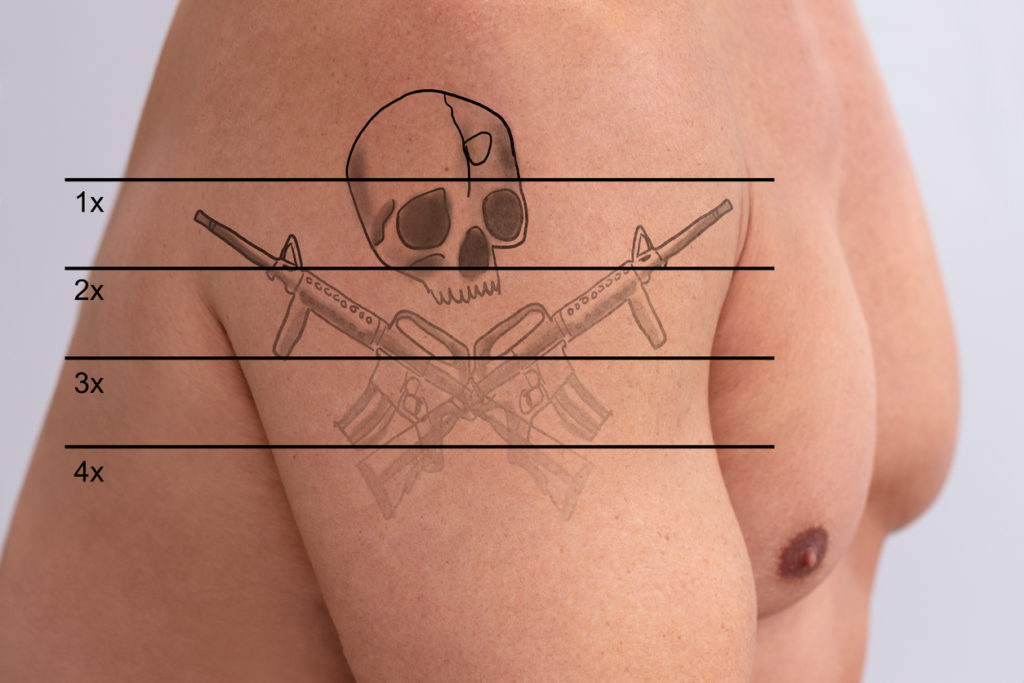

In addition to setting a practical number of treatment sessions needed, it is crucial to highlight to patients the likely side effects of laser tattoo removal.
Patients should be advised that laser tattoo removal is often partial and a lingering tattoo outline and textural variations may be seen. Patients with darker skin types have to attend more follow-up sessions. Stringent sun protection steps must be highlighted to all patients.
The area for laser tattoo removal procedure should be cleansed thoroughly and free from any leftover beautifiers or skincare commodities. Avoid using potentially inflammable cleansing agents such as isopropyl alcohol.
How Painful Is Laser Tattoo Removal
Different wavelengths of a laser can be used, depending on the tattoo color-treated, earlier response to laser treatment, and also skin phenotype of the patient. Laser spots (3-4 mm spot sizes are practiced usually) are employed with around 10-20% overlap, striving for instant whitening, and lessening pinpoint bleeding. Laser procedures can be repeated almost every 8 weeks.
Laser tattoo removal can be a bit painful for the patient this is why topical anesthetics are usually applied. The anesthetic should be completely removed before treatment. Other methods of diminishing distress for the patient include the use of cool air during the procedure, local infiltration of lidocaine, topical nerve block, or a blend of these modalities. The patient must also be provided with shielding goggles or external metal eye shields.


Some Important Post Treatment Concerns
Patients should be duly apprised to look after the treated area post- laser tattoo removal. Promptly after the procedure, patients should expect the treated area to be red and inflated. Cold compresses can be used to minimize any distress.
Patients should be instructed that sores and crusting might transpire. In order to avoid bacterial infection, after laser tattoo removal, the application of antiseptic ointment or dressing during this period is recommended. The skin will heal within the next 2-7 days. The more sessions are held the less post-care is required.
